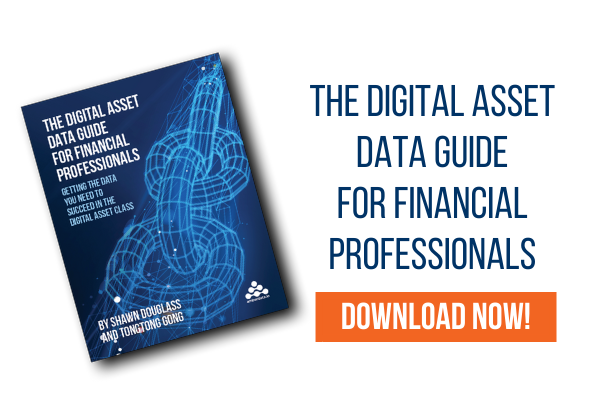
Since its inception in 2009, the digital assets market has expanded exponentially, with a current value in the trillions. The cryptoeconomy has evolved quickly and become much more complex. In many cases, the waves of new technologies and use cases flooding into the market have become so difficult to understand that making informed investments can be very confusing for a newcomer to the digital asset class.
Can a unified classification standard for digital assets solve this problem by providing investors with the information they need?
The Importance of Digital Assets Classification
In the beginning, there was Bitcoin -- a cryptocurrency built on blockchain technology.
That was all that investors needed to know. And the general concept was relatively easy for them to understand.
But very soon, Bitcoin started to be accompanied by altcoins. And some alt coins were built on blockchains that are smart contract platforms. Smart contracts are programs resident on blockchains that execute when certain predetermined conditions are met. Smart contracts are the building blocks of DEXs, DeFi, DAOs and more. Smart contracts can have almost unlimited features and use cases - from staking and yield farming to NFTs.
Simple, right?
The complexity of the digital assets ecosystem has become tiresome and off-putting not only for newcomers -- but also for analysts and insiders.
With thousands of digital assets on the market, the need for a clear and transparent classification standard has become more apparent than ever.
How Will Digital Assets Classification Standard Work?
The idea of classifying investment assets is nothing new. The Global Industry Classification Standard (GICS) created in 1999 has since become widespread. It is now being used to classify more than 26,000 equities globally, providing investors with invaluable data and assisting them in making more informed decisions.
A similar standard developed specifically for the digital assets market could be a tremendously important milestone for the blockchain ecosystem as a whole.
A digital asset classification standard could present the opportunity to push global digital asset adoption forward more quickly. It gives potential investors a powerful tool that enables them to classify digital assets effortlessly and makes it much easier to understand their investments.
Adoption of a classification standard for digital assets is still in its early stages. CoinDesk recently introduced a Digital Asset Classification Standard (DACS) solution, which aims to provide a comprehensive classification framework and a roadmap for investing in digital assets.
DACS is intended to provide investors with an easy-to-use, objective way of assessing the key factors which can make a digital asset an attractive investment opportunity. Most importantly, DACS enables placing an asset within a hierarchical structure that maps all the sub-sectors of the digital asset class -- which could give investors immediate insight into what a specific digital asset actually does.
Adoption of a standardized classification for digital assets will empower market participants to understand the differences between various types of assets. It will also allow portfolio managers to create more efficient investment strategies based on the opportunities and risks specific to each sub-sector of the digital asset market.
For now, DACS only tracks 500 digital assets, which means that it’s still quite far from covering the entire cryptoeconomy. Building a common standard of classifying digital assets is only the beginning, and CoinDesk’s effort may or may not see significant adoption. Regardless, it’s clear that a classification standard for digital assets is needed. We'll certainly be watching closely as this unfolds.
Why Amberdata?
Amberdata is an industry leader in digital asset data - providing some of the largest financial institutions with high-quality data, insights and signals, allowing them to make informed investments in the digital asset class.
With Amberdata, you get a single integration point for market and on chain data, eliminating the need to integrate offerings from multiple vendors and allowing you to accelerate time to market for your digital asset products.
Amberdata
Amberdata is the leading provider of global financial infrastructure for digital assets. Our institutional-grade solutions deliver data, analytics and comprehensive tools and insights that empower financial institutions to research, trade, and manage risk and compliance in digital assets. Amberdata serves as a...
